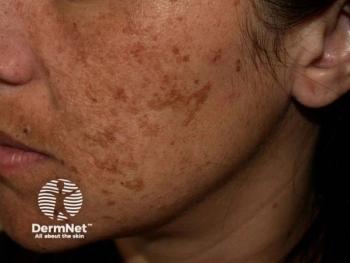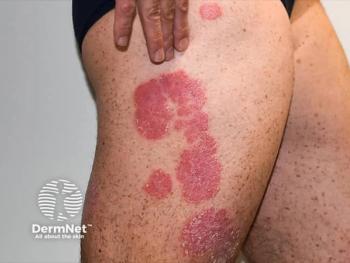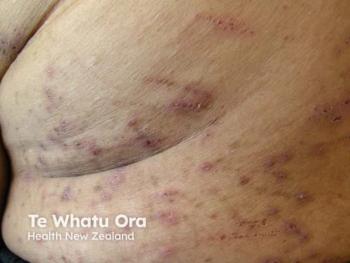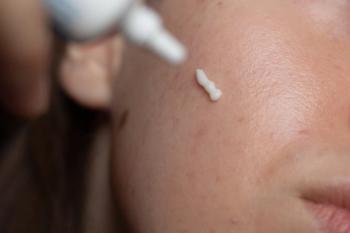
Real-World Study Highlights Burden of Moderate to Severe Atopic Dermatitis in Children and Adolescents
Key Takeaways
- Moderate to severe AD affects up to 20% of children in Europe and the US, with 60% relapsing into adolescence.
- A cross-sectional survey across six countries assessed the impact of AD on pediatric and adolescent patients, involving 772 participants.
A new study reveals ongoing burden of moderate to severe atopic dermatitis in youth, with flares, comorbidities, and quality of life impacts.
A
The study also found that despite the availability of newer treatment options, real-world data point to ongoing unmet needs in disease management, particularly around quality of life and comorbidity.
Background and Methods
AD affects up to 20% affected in Europe and the United States and 60% continuing to relapse into adolescence.2
To assess how moderate to severe AD affects younger patients in clinical practice, researchers conducted a real-world, cross-sectional survey across 6 countries: the United States, United Kingdom, France, Germany, Italy, and Spain. This study, part of the Adelphi Real World Pediatric and Adolescent AD Disease Specific Programme, gathered both physician- and patient-reported outcomes from February to June 2019.
Physicians completed record forms for their next 6 to 8 consecutive patients with AD under age 18, while patients and/or caregivers completed self-assessment questionnaires. Adolescents contributed their own responses, whereas caregivers completed the forms on behalf of younger children (ages 0 to 11).
Findings
The study included 772 patients with moderate to severe AD, split nearly evenly between pediatric (n=393, ages 0 to 11) and adolescent (n=379, ages 12 to 17) cohorts. Participating physicians (n=200) were dermatologists, pediatricians, allergists, and primary care providers.
Over half of all patients (51.9%) had at least 1 type II inflammatory comorbidity, with a significantly higher prevalence among adolescents (58.9%) compared to pediatric patients (44.9%).
Physician assessments revealed that among pediatric and adolescent patients with moderate to severe AD, 57.1% were classified as having moderate disease based on the Investigator’s Global Assessment, while 32.5% were considered to have severe disease. Moreover, severe AD was significantly more prevalent among adolescents (36.9%) compared with younger children (28.2%).
The average Eczema Area and Severity Index score across both age groups was 14.2, indicating a consistent level of disease severity regardless of age. Similarly, body surface area involvement averaged 24.0%, with no significant differences observed between age groups.
At the time of consultation, 35.6% of patients were actively experiencing a flare, and nearly 60% reported having at least 1 flare within the past year. Among those who tracked flare frequency, the average number of flares per year was 3.1. Across age groups, the most commonly reported and bothersome symptoms included intense itch, sleep disturbances, emotional distress (such as anxiety), discomfort in social interactions, and disruptions to daily activities and academic performance.
The Children’s Dermatology Life Quality Index (CDLQI) revealed substantial quality of life impairments, particularly among adolescents. Though specific CDLQI scores were not disclosed in the summary, overall scores reflected high levels of disease interference with psychosocial and functional aspects of life.
Conclusions
This large-scale, real-world analysis provides critical insight into the physical, emotional, and social burden of moderate to severe AD in youth, with key differences noted between pediatric and adolescent populations.
The study may have been limited by its cross-sectional design, subjective assessment of disease severity versus standardized scoring, and voluntary patient participation leading to potential selection bias.
"This highlights the need to incorporate disease burden in patient encounters and decision making for patients aged less than 18 years and consider the potential value of improved treatment options for both pediatric and adolescent patients with moderate to severe AD, given the evolving treatment landscape," wrote study authors Eichenfield et al.
References
- Eichenfield LF, Shi VY, Yu J, et al. Patient-reported impact of atopic dermatitis on pediatric and adolescent patients with moderate-to-severe disease: results of a real-world, cross-sectional survey. Pediatr Dermatol. Published online April 20, 2025.
doi:10.1111/pde.15940 - Global report on atopic dermatitis 2022. Global Atopic Dermatitis Atlas. Accessed April 24, 2025.
https://www.eczemacouncil.org/assets/docs/global-report-on-atopic-dermatitis-2022.pdf
Newsletter
Like what you’re reading? Subscribe to Dermatology Times for weekly updates on therapies, innovations, and real-world practice tips.


















